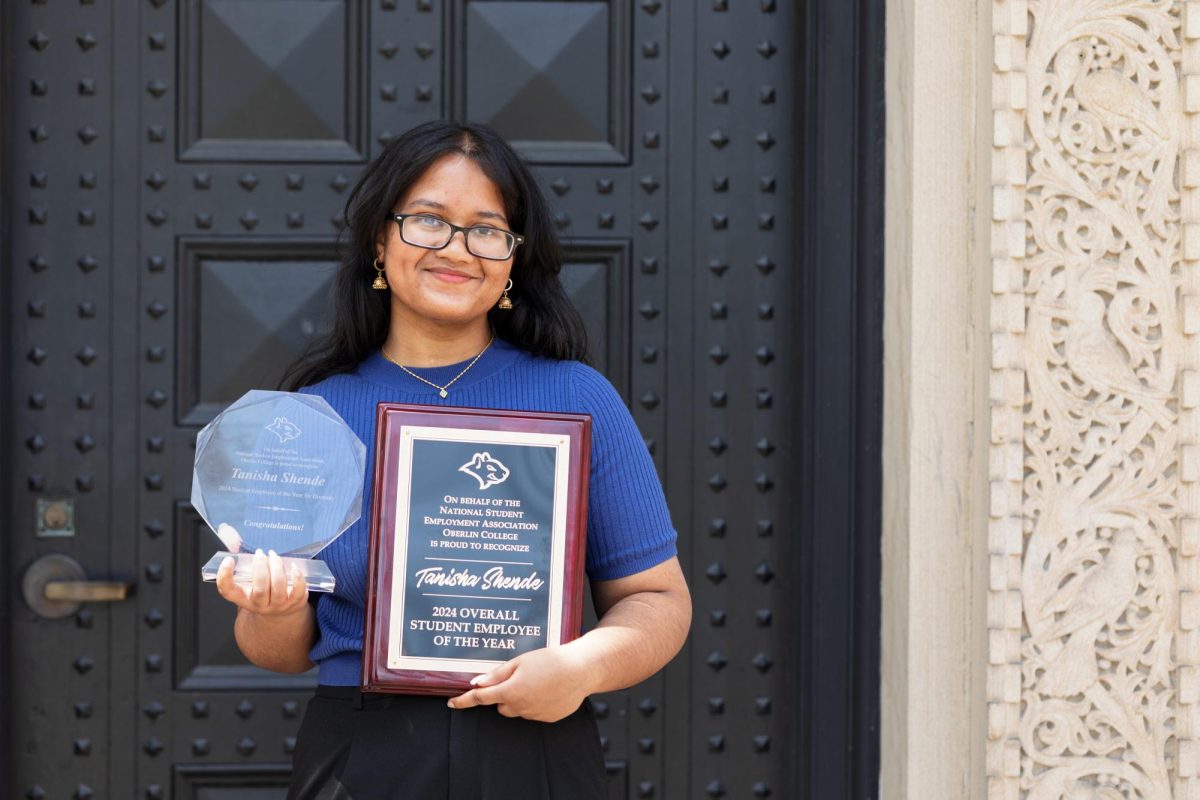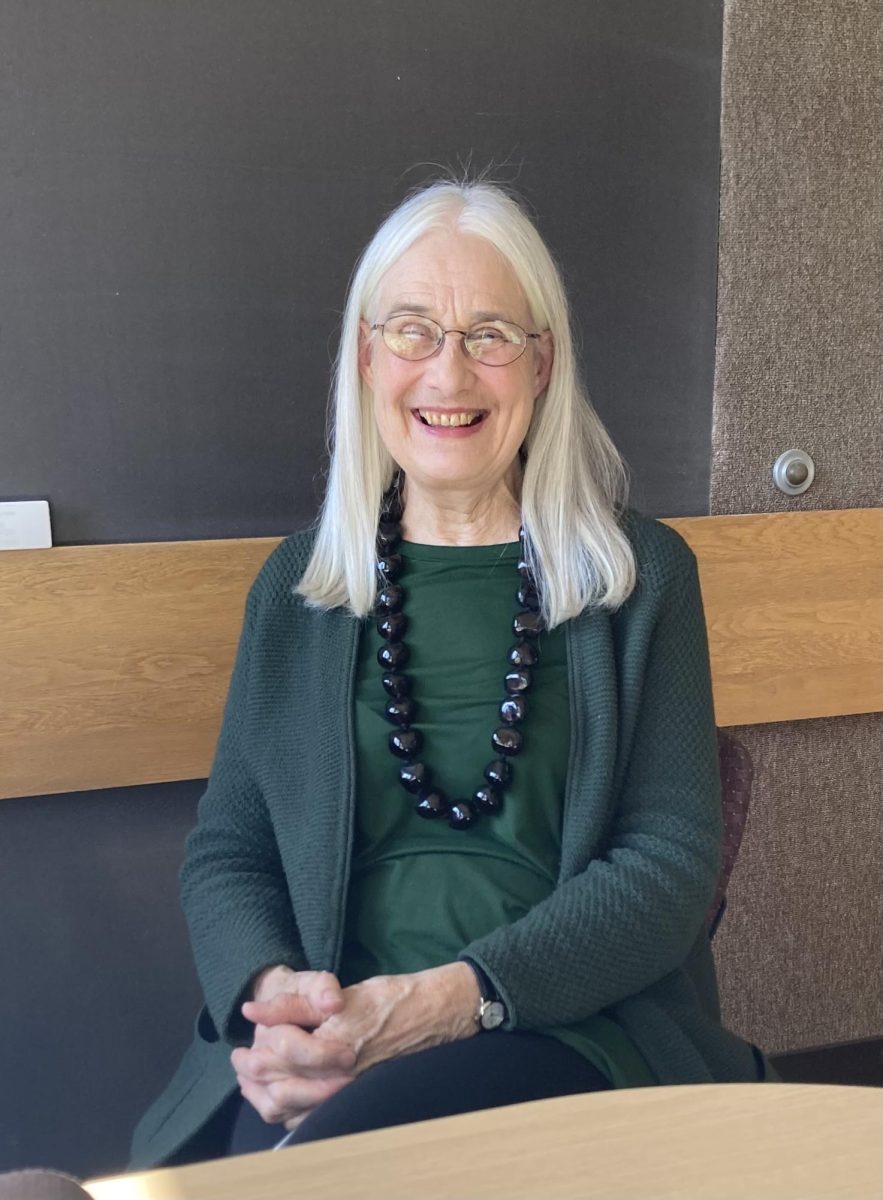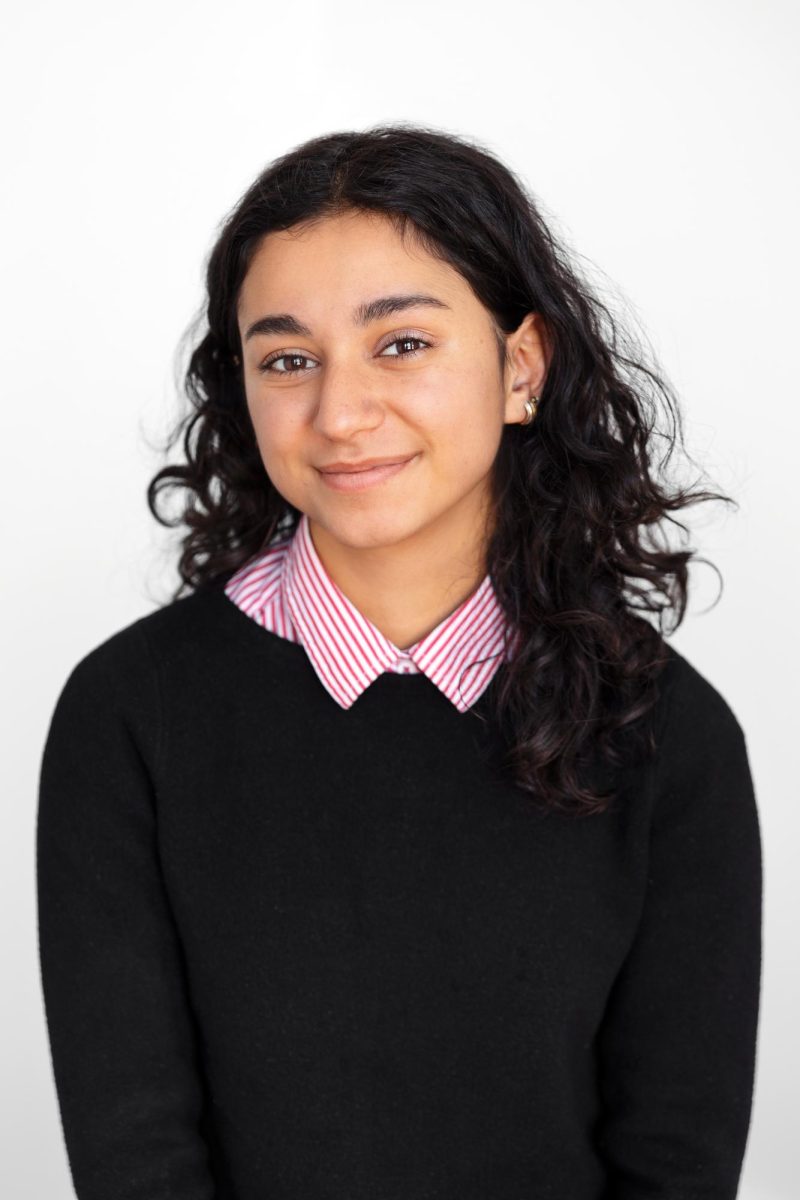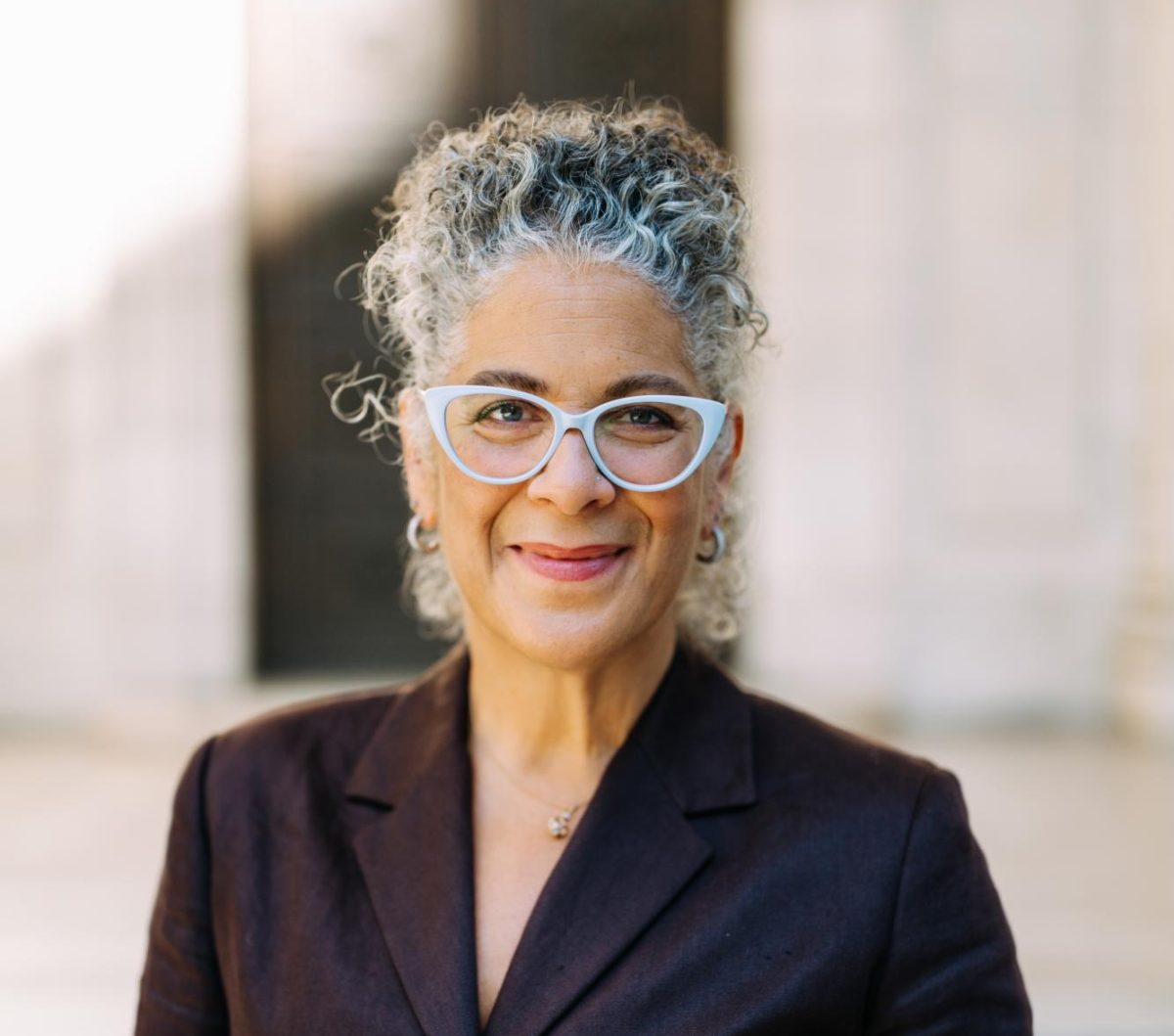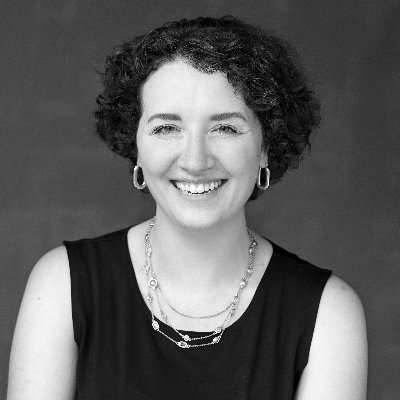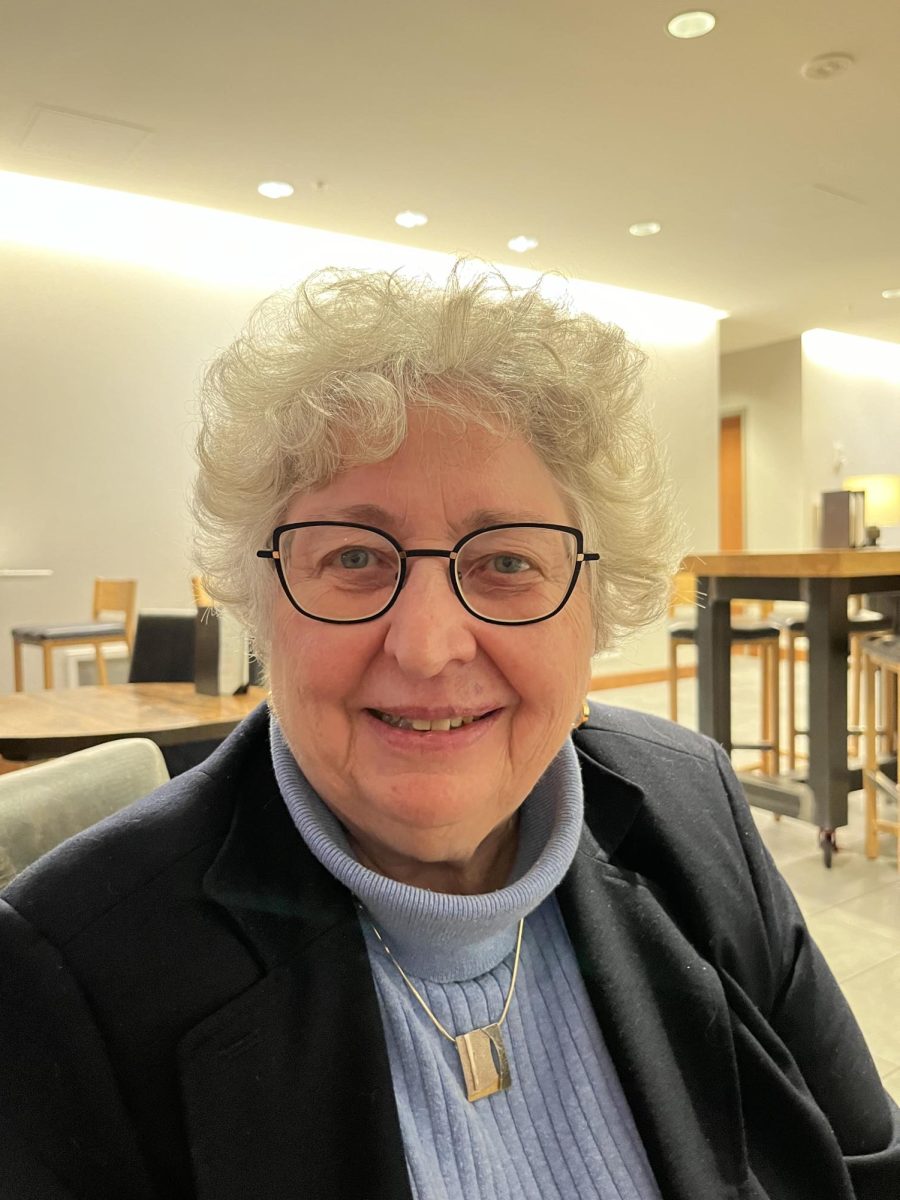College second-year Tanisha Shende is majoring in Computer Science and Mathematics with a minor in Sociology. She was named National Student Employee of the Year and Student Employee of the Year for Diversity and Inclusion by the National Student Employment Association. Shende is a Research Ambassador at the Office of Undergraduate Research and a Bridging Resources and Access to Nurture Community through Holistic Engagement in STEM Community Leader.
This interview has been edited for length and clarity.
Can you tell me about the work that you did that won you these awards?
I have two positions within OUR. But I was nominated for my work with BRANCHES. BRANCHES is a committee within OUR and The Center for Learning, Education, and Research in the Sciences that is specifically for representing underrepresented students in STEM. That’s done through providing resources for them, but also building a community for them.
My work is with this committee called Collective Efficacy, and it’s the one that I created and the one that I currently lead. When I first started the job, I came up with it last summer. I wanted to reach people that we weren’t currently reaching, like people who weren’t coming to our events, people who are on the boundaries of STEM, who we wouldn’t be able to reach otherwise. I wanted to take a more scientific approach to understanding why they’re not being as involved.
I like to say that the purpose of collective advocacy is to understand and mitigate structural barriers to involvement and success in STEM at Oberlin. Through that, I’ve created some initiatives to both understand the disparity more and try to mitigate that. For instance, we started up listening sessions again, which are centered around different identity groups, such as race, class, and sexual orientation. It’s meant to just understand their experiences at Oberlin and how their identities intersect with their STEM experiences and how they contribute to the experiences that they’ve had here. We also have community-building events like movie nights and BRANCHES and boba, where we give people boba in exchange for hearing information about OUR programming.
We also have academic and professional events such as study nights, course planning, and study strategies. We’re also launching a mentorship program next semester that might be a collaboration with Chemistry. And so we’re trying to work with the department and see how we can develop a mentorship program that pairs underclassmen with upperclassmen, but also faculty members. We’re also trying to work with the faculty diversity, equity, and inclusion group with BRANCHES being the middleman between students and faculty.
Can you tell me about how underrepresented groups have not been traditionally involved in STEM and why you decided to start your work?
When I started, my work was more focused on research opportunities, which is a bit different because BRANCHES is more STEM-oriented, but I’m also a research ambassador. I noticed that people, even if they want to participate in STEM research, weren’t able to access information because there are a lot of psychosocial factors that impact marginalized students participating in research and STEM. For instance, there’s an imposter phenomenon, where marginalized people are more likely to think that they don’t deserve the accolades they receive or the positions they’re in. They experience things like stereotype threat, where they’re afraid to confirm any negative stereotypes about their identities. So even if there aren’t explicit barriers for marginalized people, there are still a lot of underlying psychological ones that impact their mental health and the way people perceive them. Though there are also a lot of social barriers to success in STEM. If you are neurodivergent, that’s an invisible disability. And so you struggle with being validated but also with disability accommodations. It’s hard to validate invisible disabilities, and so because of that, you deal with a lot of self-esteem issues, and stress related to validation, and that implicitly factors into your education and your success. It may limit the opportunities you will receive but also affects how you feel about yourself and how you conduct yourself day to day.
How has being employed by the college helped you pursue your goals related to diversity in STEM?
I think that I’ve always had these ideas to implement and I’ve noticed these things anecdotally. Being employed by the college has given me a position of power and support because since I’m employed, and have actual faculty members and staff members backing me, I can implement my ideas more successfully. It just gives me a bigger platform to use because it’s, again, backed by faculty and staff. I’m taken more seriously, so I can implement the things that I want to implement. So it’s both interpersonal support and also institutional support and validity.
Would you encourage others to pursue this line of work and why?
I think that you need to investigate what you really want out of it and what you want to contribute to your college community. I am very interested in accessibility and advocacy and I wanted to channel that through my work. I think that if you want to work at the College, especially in this capacity, where you’re actually making a change or developing programming, you need to investigate why you’re doing the things and what you hope to achieve with this. You need to do a lot of personal work for that.
Is there anything else you would like to mention?
I can talk more about what I do as a research ambassador in OUR because it’s similar to BRANCHES work, but it wasn’t what I was nominated for. I’m developing a website for OUR that includes resources to get involved with research because there’s one big hurdle to getting involved in research. It’s just not knowing.
So, for instance, if you went to a well-resourced high school, then you would know who to contact, and how to contact them. There’s a lot of implicit information that people aren’t told. I wanted to break that barrier by writing out blog posts or informational guides about, for instance, how to reach out to committee members, how to cold call people, or how to negotiate offers. In addition to that, I wanted to create an information hub about research opportunities on campus and off campus, update our current list of resources, make opportunities more explicitly for international students, include information about pay versus for credit, and create a list of people you can reach out to. One big thing is that people who don’t have a lot of time or energy to get information by themselves are less inclined to pursue research, and so by creating this public information, it’s more accessible to students. The second project I’m doing is a research study, which I started by myself but I’m getting help from Associate Professor of Sociology and Comparative American Studies and Director of Accreditation and Assessment Daphne John, is meant to investigate the barriers to research at Oberlin, and that takes into account different identity groups and is done through surveys and interviews.


